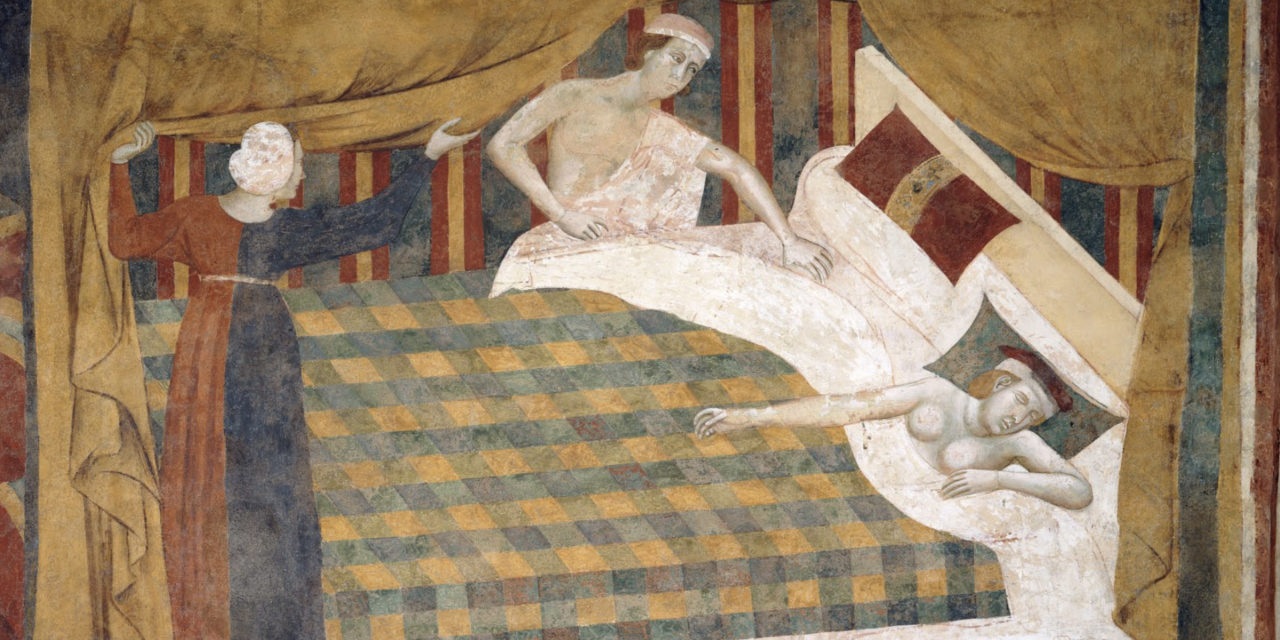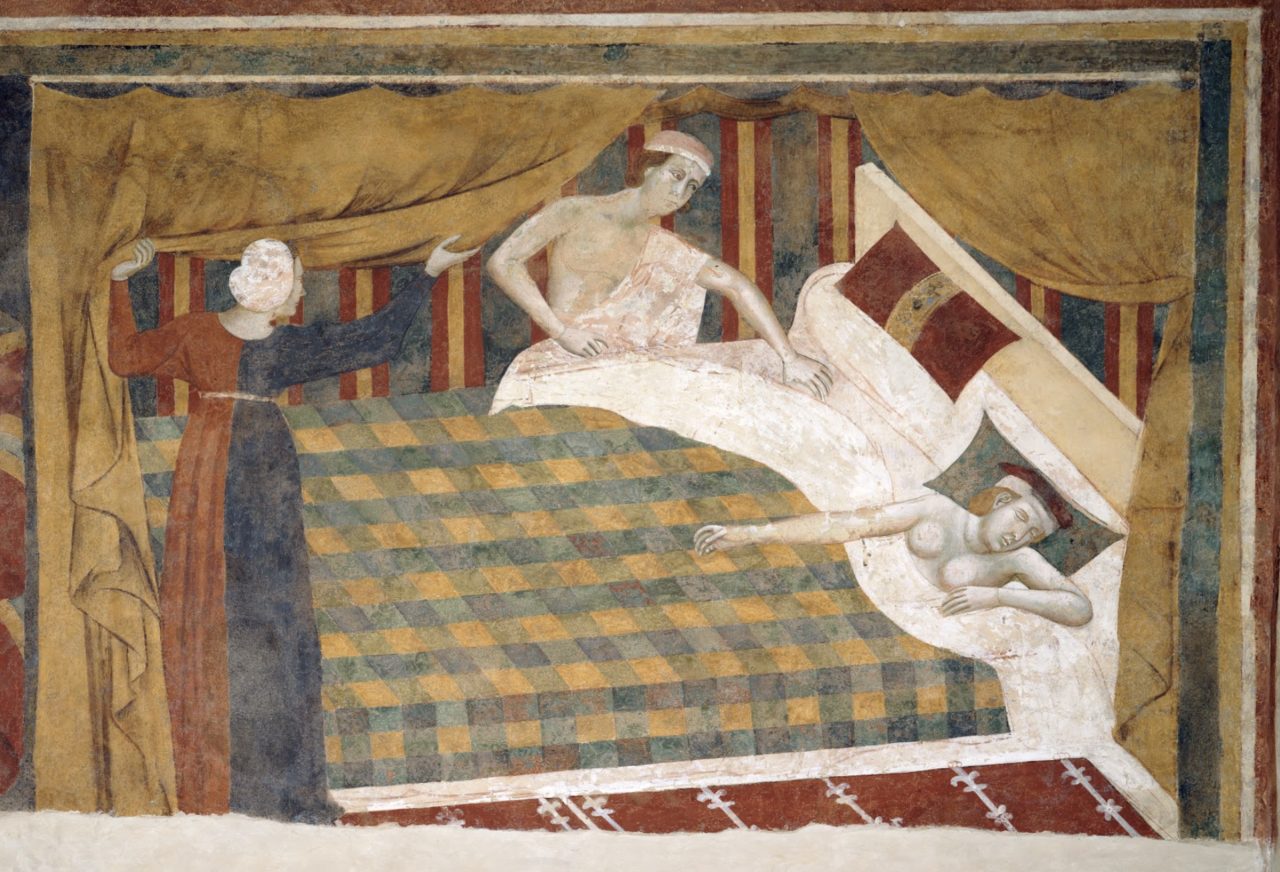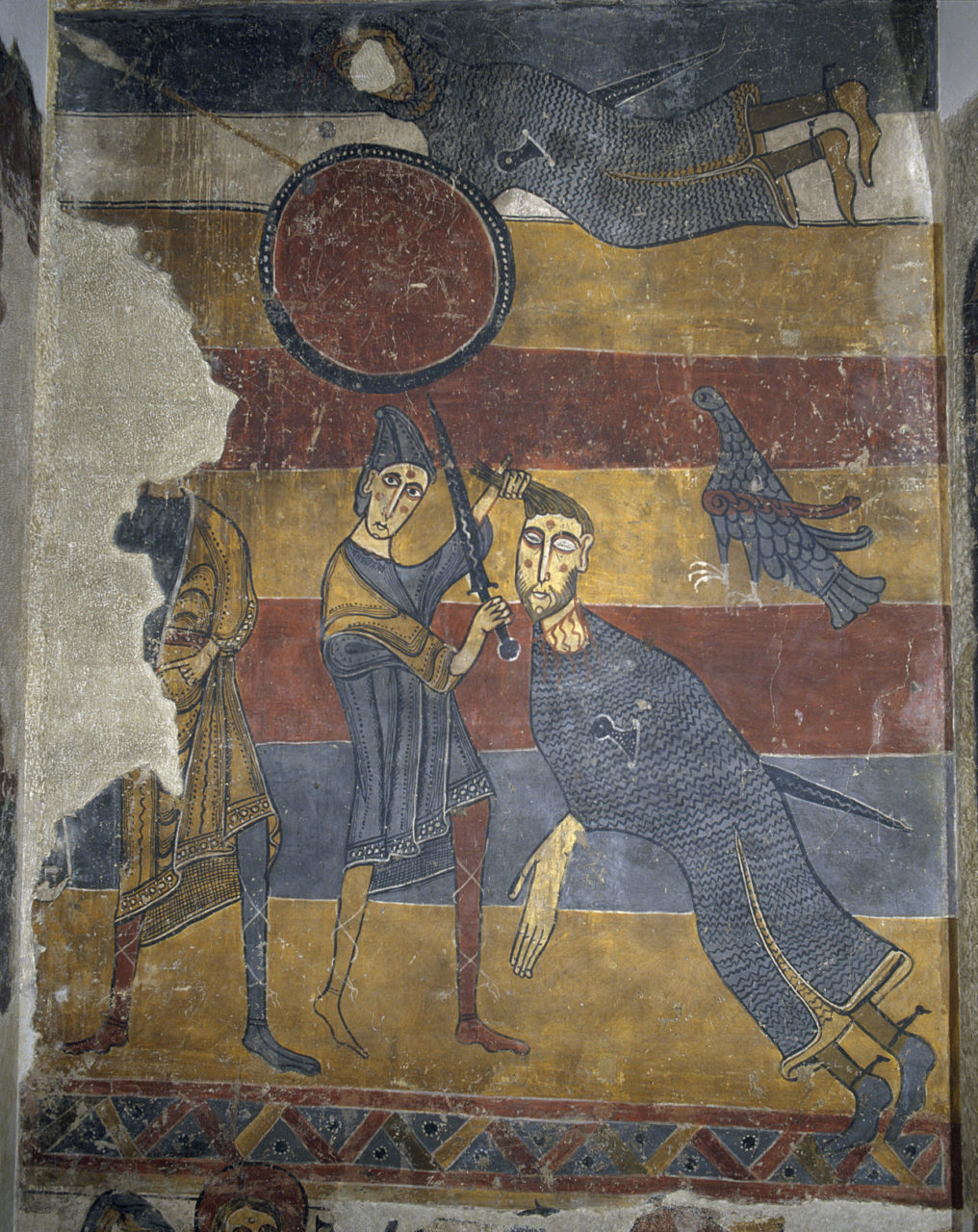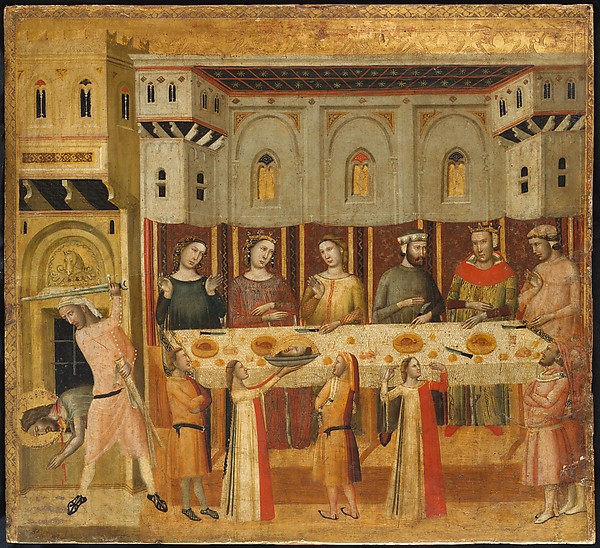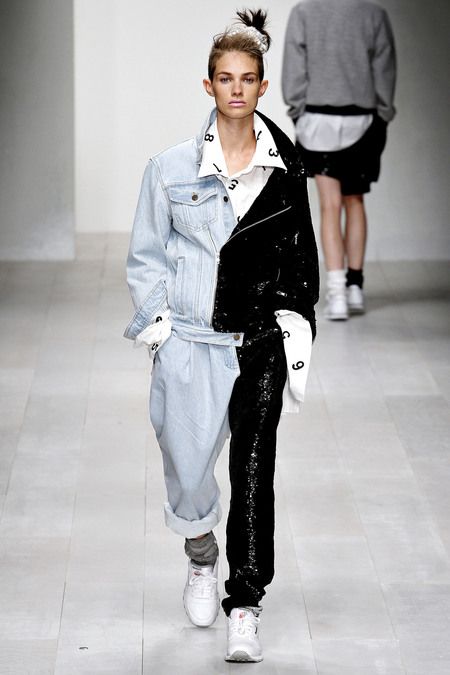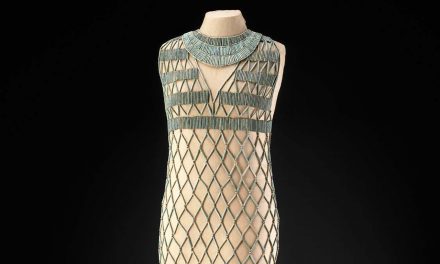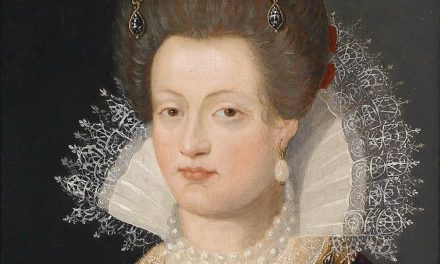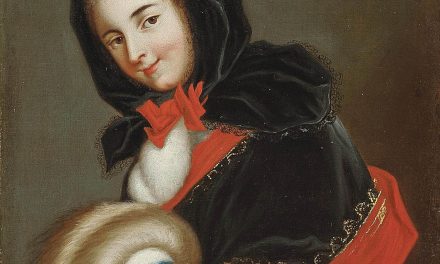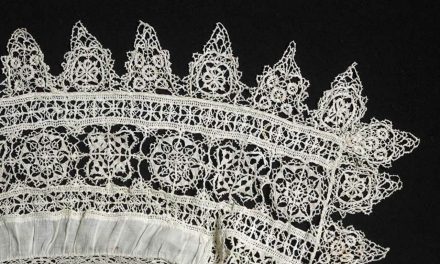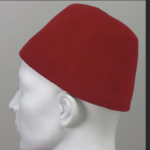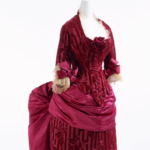Parti-color is the combination of different colors within the same garment along the vertical axis.
The Details
The Encyclopedia of World Costume (1986) defines parti-colouring as:
“a method of decoration where one half or one quarter of a garment was made in one colour and pattern and the other or others in a different one. A fashion of the Middle Ages in Europe, especially of the 14th and 15th centuries. Garments worn by either sex could be parti-coloured, from ladies’ gowns to men’s tunics, hoods and cloaks, but it was masculine hose which were most often treated in this way. The hose was divided vertically down centre back and front and often quartered at the knee also and this lent accent and distinction to a well-turned leg.” (Yarwood 85)
Similarly, The Complete Costume Dictionary (2011) defines parti-colouring as:
“A fashion prevalent in Medieval Europe from the late twelfth century until the end of the fifteenth century wherein garments were made in one colour and design on one half or quarter and a different colour or pattern on the other sections. Masculine hose was most often parti-coloured, divided vertically down the centre of the leg, front and back and, often, quartered at the knee also.” (Lewandowski 98)
As The Dictionary of Costume (1969) explains, particolored garments became popular because of the rise of heraldy:
“The whole costume was divided into variegated colors and the family coat-of-arms, emblazoned upon the dress, stamped in gold and silver leaf and colored enamels. Such costumes were passed down the family and valued as historic dress. The jester in his parti-colored costume is a survival of the period.” (Wilcox 133)
When families intermarried they would conjoin their colors and coats of arms leading to a sort of vertical color blocking on garments, which soon became a wider fashion trend.
Fig. 1 - Artist unknown (Irish, 1226-1331). Geoffrey De Geneville (1226-1331), Justiciar for Ireland, from The Great Charter Roll, 1273-1276. Vellum. Waterfront, Ireland: Medieval Museum. Source: Irish Archeology
Fig. 2 - Artist unknown (German). Large Heidelberg Song Manuscript (Codex Manesse), 1305-1340. Parchment; 35 x 25 cm (14 x 10 in). Zürich: Universitätsbibliothek Heidelberg, Cod. Pal. germ. 848, Bl. 339r. Universitätsbibliothek Heidelberg. Source: Heidelberg Historische Bestande
Fig. 3 - Memmo di Filippuccio (Italian, 1288-1345). Profane love scenes: The spouses retired to bed, 1306. Fresco. Siena: Fondazione Musei Senesi. Source: Google Arts & Culture
Fig. 4 - Master of the Day of Judgement (Spanish). David and Goliath and other scenes from Santa Maria de Taüll, After 1123. Fresco transferred to canvas; 525 x 232 cm (207 x 92 in). Barcelona: Museum of Catalan Art, 015965-001. Purchased by the Junta de Museus in the 1919-1923 campaign. Source: Museu Nacional D'Art de Catalunya
Fig. 5 - Giovanni Baronzio (Italian, active in Romagna and the Marches, second quarter 14th century). The Feast of Herod and the Beheading of the Baptist, ca. 1330–35. Tempera on wood, gold ground, and silver; 44.1 x 49.8 cm (17 3/8 x 19 5/8 in). New York: Metropolitan Museum of Art, 1975.1.103. Robert Lehman Collection, 1975. Source: The Met
Its Afterlife
Designers like John Frederics in the 1940s have also incorporated particoloring in their designs (Fig. 6). Ashisha demonstrates the elegance of particolored clothing even today (Fig. 7).
Fig. 6 - John Frederics (American, 1928-1964). Woman's dress and Hat, Early 1940s. Silk jersey; center back length (dress): 121.9 cm (48 in). Philadelphia: Philadelphia Museum of Art, 2003-22-7a,b. Gift of Virginia Pepper Purviance, B. Franklin Pepper, and Rebecca Pepper Sinkler, 2003. Source: Philadelphia Museum of Art
Fig. 7 - Ashish (India). Mathlete, Spring 2013. Model: Harmony Boucher. Photo: Marcus Tondo. Source: Vogue
References:
- Colm. “Split down the Middle: Parti-Coloured Clothes in 14th Century Ireland | Irish Archaeology.” Accessed January 6, 2018. http://irisharchaeology.ie/2015/03/split-down-the-middle-parti-coloured-clothes-in-14th-century-ireland/.
- Lewandowski, Elizabeth J. The Complete Costume Dictionary. Lanham, MD: Scarecrow Press, 2011. http://www.worldcat.org/oclc/788995672.
- Wilcox, R. Turner. The Dictionary of Costume. New York: Macmillan, 1987. http://www.worldcat.org/oclc/925659137.
- Yarwood, Doreen. Costume of the Western World: Pictorial Guide and Glossary. New York: St. Martin’s Press, 1980. http://www.worldcat.org/oclc/13294819.
- ———. The Encyclopedia of World Costume. New York: Bonanza Books, 1986. http://www.worldcat.org/oclc/841465233.

